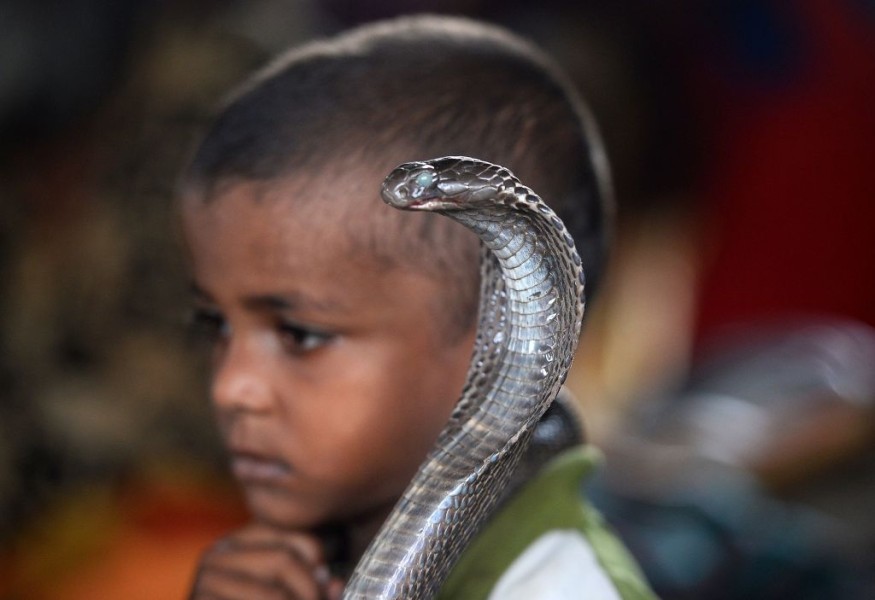
A younger brother of a deceased 38-year-old man who died from snake bite experienced the same fate.
The 22-year-old man, identified as Govind Mishra, was the younger brother of Arvind Mishra who had died of snake bite, senior police official Raman Singh told the Press Trust of India news agency. During his last funeral rites, Govind had come to Bhawanipur village in the state of Bihar in India from Ludhiana in Punjab, together with one of their relatives, Chandrashekar Pandey (22).
According to The Independent, Govind and Mr Pandey were also bitten by another snake, which caused Govind's demise. Meanwhile, Mr Pandey, who was also at the same house, was taken to the hospital immediately and remained in a critical condition.
Officials said that the younger brother lost his life on Thursday after being bitten by a snake in his sleep.
Snakebites in India
The World Health Organization (WHO) estimates about 5 million snakebites each year globally, of which "between 81,000 and 138,000 deaths occur each year". Published reports suggest that nearly half of the fatalities are reported from India, although many snakebite cases go unreported because "victims seek treatment from non-medical sources or do not have access to health care".
The global health agency notes that around 90% of snakebites in India are caused by the 'big four' among the crawlers - common krait, Indian cobra, Russell's viper and saw scaled viper. "Effective interventions involving education and antivenom provision would reduce snakebite deaths in India," WHO says.
To prevent or reverse most of the harmful effects of snakebite envenoming, snake antivenoms which are effective treatments are already included in the WHO Essential Medicines List and "should be part of any primary health-care package where snake bites occur," the agency adds.
An Ongoing Crisis
Snakebite envenoming and getting treatment had been an ongoing crisis in India. WHO identifies snakebite envenoming as a potentially life-threatening disease caused by toxins in the bite of a venomous snake. Unfortunately, there had been inadequate efforts to control snakebite envenoming in India, mostly due to lack of access to antivenom, or many people cannot afford to pay for them. Many victims also do not seek medical attention from health centers or hospitals and rely on traditional treatments instead.
In an effort to secure these antivenoms, many families even sell their possessions or go into debt in order to obtain them after someone in the family gets bitten.
Ensuring proper regulation and testing of antivenoms has also been a difficulty in the country, affecting the availability of good quality, effective products.
Typically, groups of high-risk include rural agricultural workers, herders, fishermen, hunters, working children, people living in poorly constructed houses and those with limited access to education and healthcare, while morbidity and mortality rate occur most often among young people and children.
While it remained unknown what snake species bit and caused the deaths of the two brothers, the 'big four' could be the main culprit of the unfortunate event.
Related article : Strange Ancient-Looking Greenland Shark with Blue Eyes was Half-Blind When Hooked by Belizean Fishers
© 2025 NatureWorldNews.com All rights reserved. Do not reproduce without permission.





